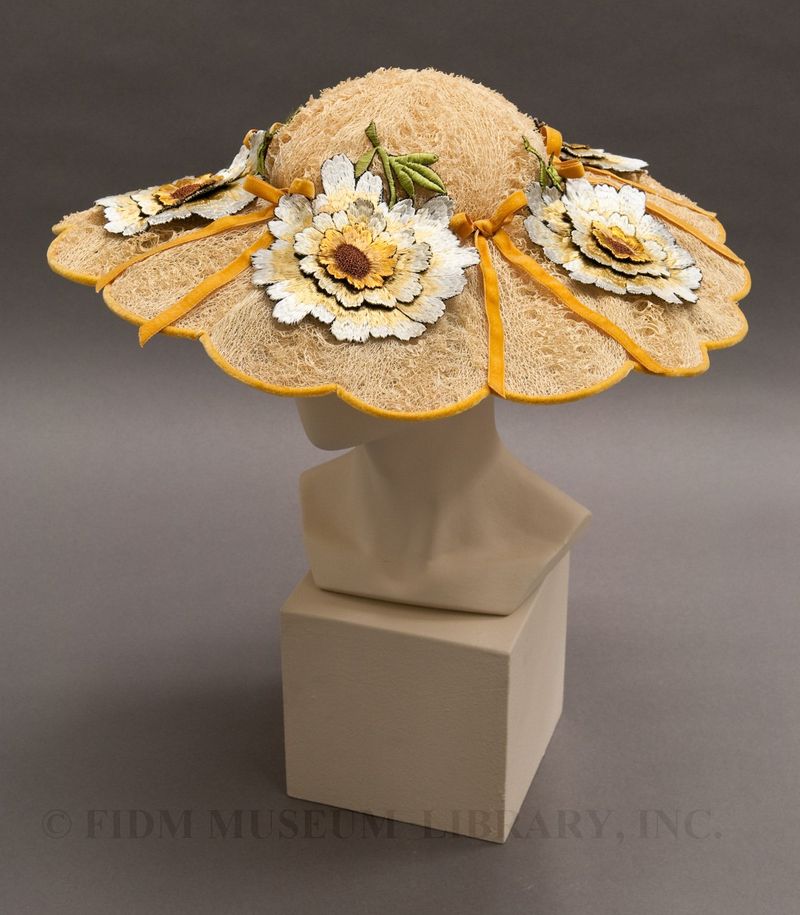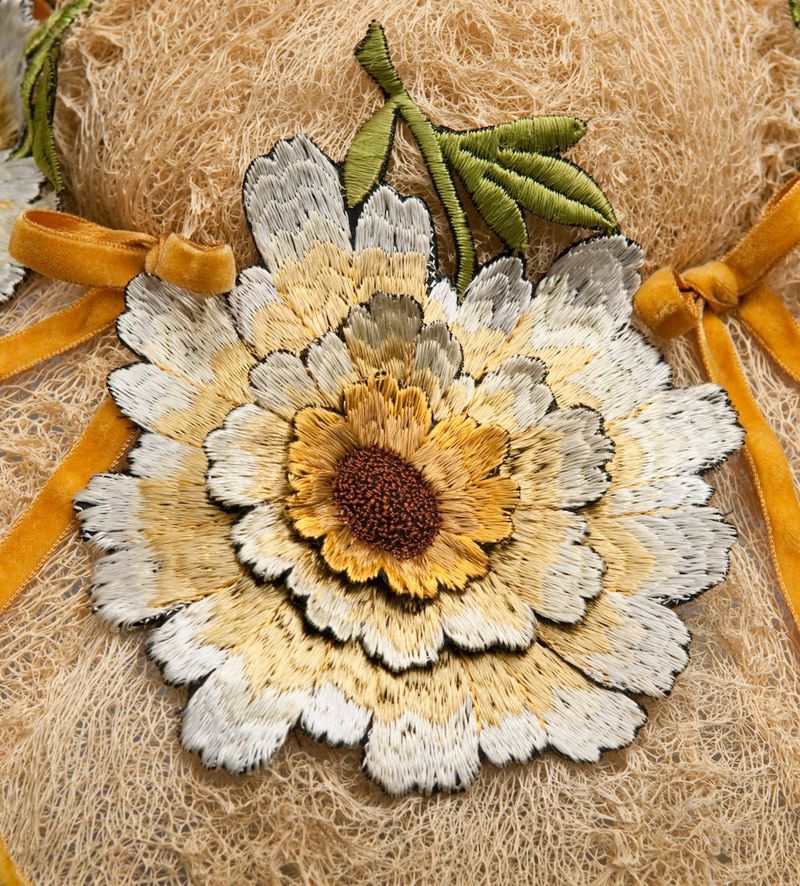Lazy Daisies of Summer
A native of Georgia, milliner Archie Eason served in the Coast Guard before becoming a stock boy in the Cohen Brothers department store in Jacksonville, Florida, in the early 1950s. With no formal training or experience, he quickly earned a promotion to the store's custom millinery department with creations like this cartwheel hat trimmed with silk velvet ribbon and machine-embroidered daisy appliques. At first glance, the hat appears to be made of plaited straw, a traditional millinery material. But it is actually sculpted from loofah, a tropical vine fruit that, when dried, becomes a fibrous, lightly abrasive sponge, often used as a natural exfoliant. Florida is a leading producer of loofah, and Eason's hat makes ingenious use of this native crop.
 Archie Eason
Archie Eason
c. 1955
Museum Purchase
2009.5.9
By 1958, Eason's hats--"signed" with a green sequin at the back--were available in 47 cities nationwide; each retailer received only one of each style, to ensure that no two customers would be caught wearing the same hat. A 1958 profile in Women's Wear Daily praised the milliner's "creative flair and eye for color and shape." Eason never sketched, but let his materials dictate his designs. Though hats were rumored to be on their way out of fashion throughout the 1950s and 60s, Eason refused to worry, saying: "There isn't a woman in the world who doesn't like a pretty hat."
In 1960, Eason moved to New York, where he began making hats for Seventh Avenue designers like George Stavropoulos and Donald Brooks. His talent for working with nontraditional materials served him well, for blocked hats were being replaced by soft caps, turbans, berets, kerchiefs, fezzes, and cloches of fabric and fur. "Buyers do not want 'hat' hats," Eason explained. "They are definitely going for youth." In December 1966, at at time when many fashion designers were branching out into youth-oriented boutique collections, Eason launched "Archie Baby," an inexpensive line of hats aimed at girls ages 4 to 16, adapted from his adult designs. But it failed to inspire a new generation of hat lovers--or a new use for loofah.
